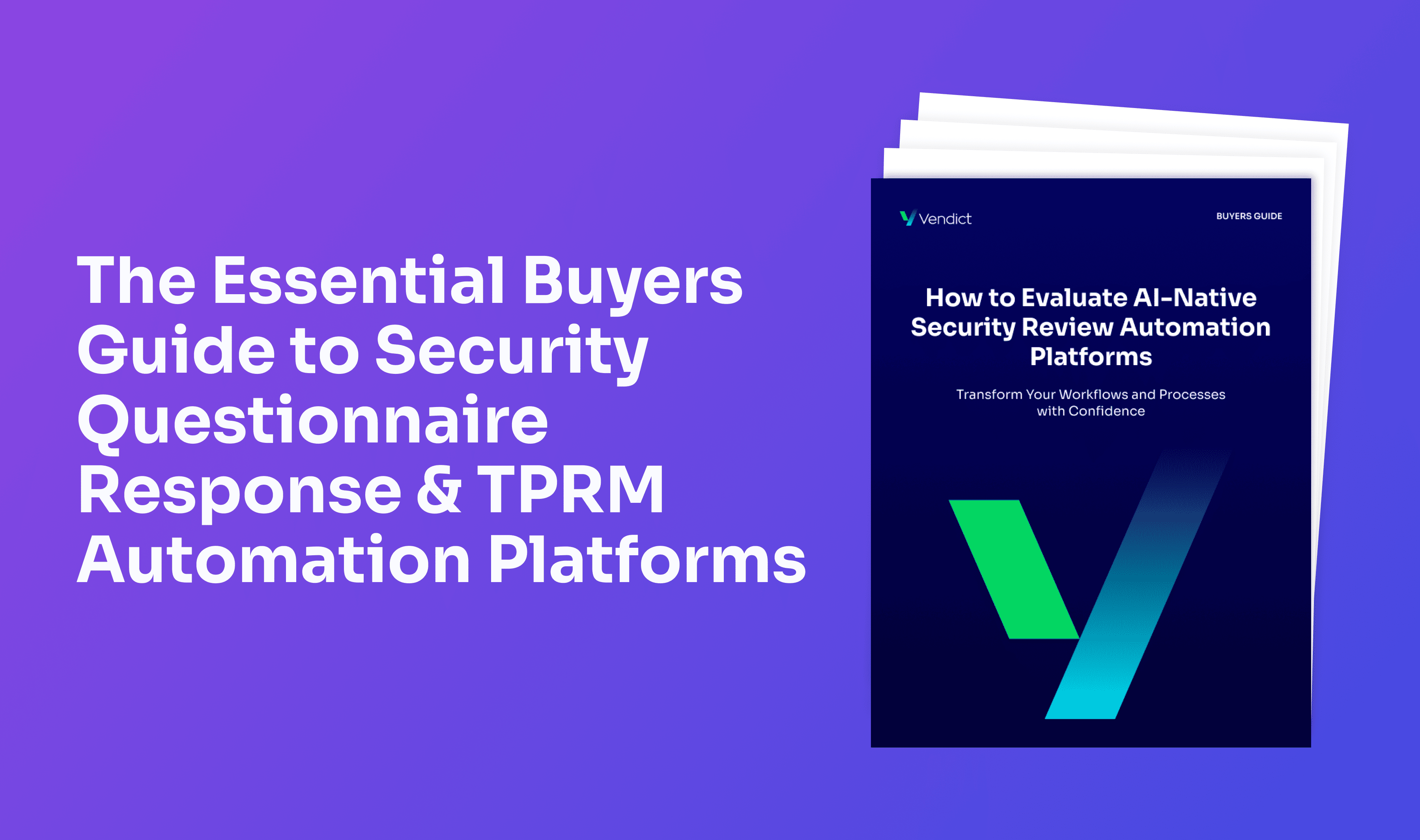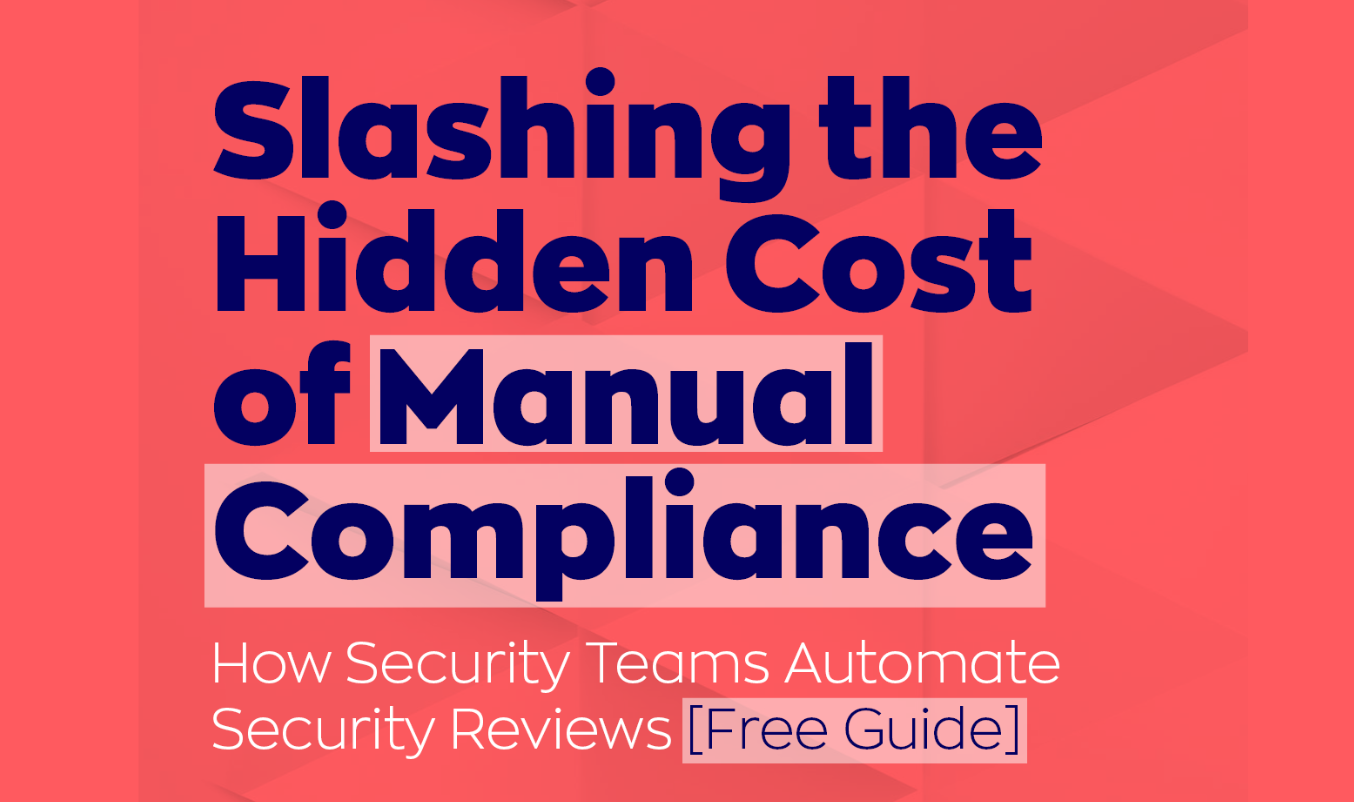Tips for efficiently responding to security questionnaires

If you are a vendor, you are a part of a supply chain and your operations might greatly impact your customers, since you probably store or process sensitive data (personal or business information). Therefore, you are probably familiar with security questionnaires that are sent by your clients. Despite the significance of these questionnaires to your customers, many vendors conceive them as an organizational nuisance which is a challenge to handle.
Fortunately, there are several ways to optimize this process. In this article, we’ll explore some strategies that will help you respond to security questionnaires in a timely and efficient manner.

Why are security questionnaires such a burden on vendors?
Security questionnaires can be lengthy and very time-consuming for the vendor. Some can reach hundreds of questions and since there is no one standard version, vendors will get questionnaires in multiple formats and contents, deriving mundane and repetitive manual replies. In addition, adequate and prompt responses are often crucial for winning a business engagement, since the vendor’s competitors are also in this race and might beat the vendor to it.
Another hindering factor causing an organizational burden on the vendors is the contents of these questionnaires, which pertain to various security and privacy domains, such as:
- Organization of information security
- Asset management
- Human Resource Security
- Physical and environmental security
- Communications and operations management
- Access control
- Information systems acquisition, development, and maintenance
- Information security incident management
- Business continuity management
- Security and privacy compliance
- Documented policies and procedures
In many vendor companies, this diversity of topics would require the involvement of multiple entities in order to gather the responses. This would not only delay the prompt response but also demand many entities to put aside their routine tasks and concentrate on these questions. Many vendors find going through a security questionnaire so challenging, that in many cases they decide to abort the business opportunity, to begin with. In fact, research shows that over 15,000 hours are spent by vendors on completing such questionnaires each year.

Why and to whom are security questionnaires important?
Before diving into the best ways to optimize the security assessment process, let’s make sure that you understand why security questionnaires are so important and to whom. These questionnaires are an essential part of the vendor risk assessment process, as they have become the most common tools for clients to identify potential security gaps, assess any potential vulnerabilities which might impact the client itself, and verify that the vendor follows all the required cybersecurity compliance frameworks. Third-party security risks are considered the leading source of vulnerabilities for a customer, and these are handled with the utmost client concern prior to approving any vendor onboarding. Gartner estimates that by 2025, 60% of organizations will use cybersecurity risk as a primary determinant when conducting third-party transactions and business engagements.

However, if treated thoroughly, security questionnaires can also play an important role for the vendor.
To begin with, security compliance is essential nowadays more than ever, as it helps companies avoid the risks associated with data breaches which greatly influence operations, financial sustainability, client trust, business reputations, etc.
Secondly, when a security incident occurs, it might cost companies millions of dollars to recover. According to Statista, in 2022, the global average cost of a security breach hits $4.35 million.
Also, security questionnaires are often required by security standards such as NIST or ISO, and even in most large tenders, RFIs and RFPs, so companies have no choice but to comply with these frameworks.
In security-mature companies, this burden may even seem like an “order generating tool”, which assists the organization in validating its security mechanisms and processes.
5 Tips for responding to security questionnaires more efficiently

One thing is for sure — whether we like them or not, security questionnaires are here to stay. So, the best we can do is find a way to optimize the process of completing them.
Therefore, let’s take a look at a few tips on how to make this process more efficient, and how to take this burden off your teams and allow them to focus on their routine and ongoing tasks.
Define a clear process
What do you do once you receive a security questionnaire?
It’s essential that you define clear guidelines on how to complete this process and not leave this task to chance. You might have to deal with multiple questionnaires at once, and you don’t want to delay your sales process because of them.
Start by deciding which members of your team or teams are responsible for this task. Make sure they have the necessary information and skills for answering a security questionnaire. This often involves senior members of your team/s or outsourced security consultants.
Then, define a workflow and ensure that all team members involved in this process have access to your plan. Include information about the people responsible for this task, the process of handling questions, the available documentation and evidence, and any other resources.
Also, make a plan on how to interact with the clients. Think about every possible scenario. What should happen in case of a delay from your side? What should your team members do if the clients require additional information once you’ve already sent them the security questionnaire? What is the procedure for receiving and submitting a security questionnaire? Documenting the answer to all these questions will be extremely useful for everyone involved in this process.
Keep it simple
People tend to overcomplicate things when dealing with something as complex as a security questionnaire. Don’t be one of them. On the other hand, do not overlook, delay or undermine the questionnaire. Both approaches will only make the process more difficult and longer.
Instead, try to keep it simple. Pay attention to each question, and provide detailed answers but try not to offer more information than required. Many questions can be answered in one or two sentences. Avoid overloading clients with unnecessary information, especially on issues or question intentions that you are not completely certain about since imprecise information might harm you.
Also, make sure your questionnaire responses are clear. The information you offer to clients should only include sincere, accurate, and relevant answers. Avoid elaborations using non-existing processes or solutions, since a client might later ask for evidence or even hold you responsible for a security incident.
Plus, it’s important to also add evidence where available and possible. This will help you establish a trusting relationship with the client right from the start. If you stumble upon ambiguous questions, don’t hesitate to reach out for more information.
Create a knowledge base
One of the most efficient ways to optimize the completion of security questionnaires is by creating a knowledge base.
What does it take?
A knowledge base or a response repository contains the security questionnaire responses you used in the past. As stated before, while security questionnaires might differ from one to another, many questions remain the same. Therefore, having your answers documented can save you a lot of time and frustration.
You can use a spreadsheet or any other format that allows you to easily add and search for information.
Start by creating a knowledge base with answers to the standard questionnaires that you usually encounter or on the commonly repetitive topics. Then, add more specific information for different topics, industries, and regions.
Once you have created a response repository, make sure you update it every time you encounter a new type of security questionnaire or any additional questions. Also updating your answers and evidence is even more important, as they change with time.
Having a solid and up-to-date knowledge base will save you a lot of trouble in the future, and it will make your team’s work faster and more efficient.
Automate the process
What if there was a way to complete a security questionnaire much faster?
Fortunately, there is. By using an automation tool, you can take this burden off your chest and let the technology do the work for you. Even to the extent of over 90%.
How does it work?
An automation tool can help you provide accurate answers to all questions using your evolving knowledge base. It does more than copy and paste your predefined answers. It provides the best answer for any type of security questionnaire, and it makes sure your answers are compliant with cybersecurity frameworks.
At Vendict, we have developed an automation tool that uses Natural Language Processing (NLP) to hyper-accelerate your sales process by completing security questionnaires 50x times faster than it would take to do it manually.
Our solution is able to cut even through the most complex questionnaires and provide technically and methodologically accurate and on-point answers to all the questions.
Read more: Security questionnaire automation made easy
Final thoughts

Security questionnaires have become a necessity for ensuring data security, and they are a common part of risk management strategies. It’s important to understand that in a business world where cyber threats are more common than ever, organizations need to do their best to protect customer data and ensure they have efficient security mechanisms, processes, controls, and procedures in place.
Considering that security assessment questionnaires are here to stay, it’s time to find a way to save time and make your work more efficient, both in responding to those questionnaires and in leaving your hands free to handle the routine tasks and targets which you are intended to fulfill.
So, what are you waiting for? Book a call with one of our experts, and say goodbye to manual, mundane, and frustrating work!






.png)




.png)